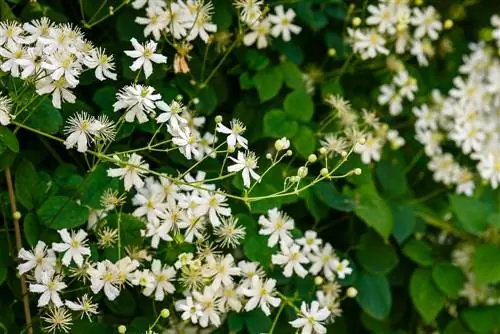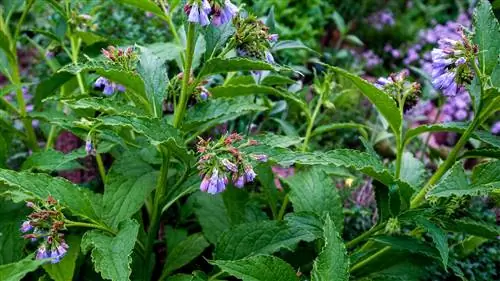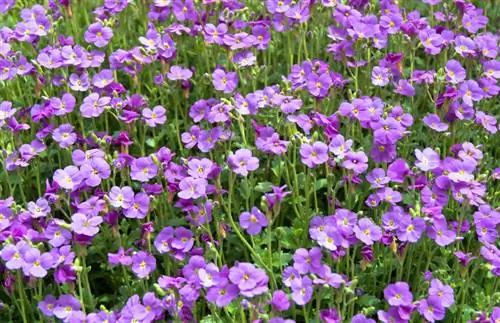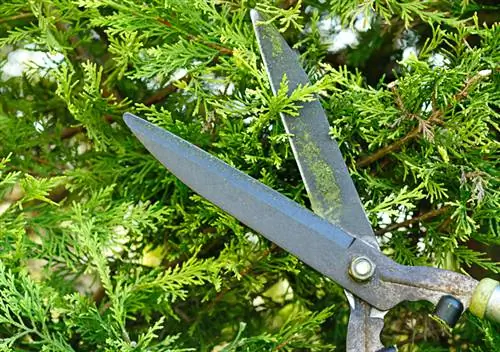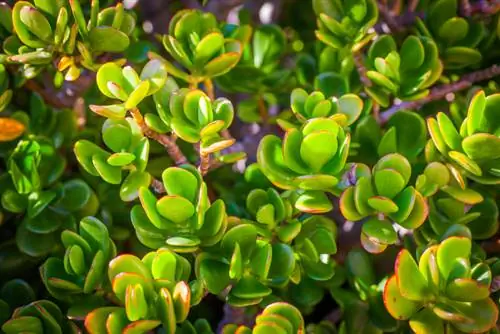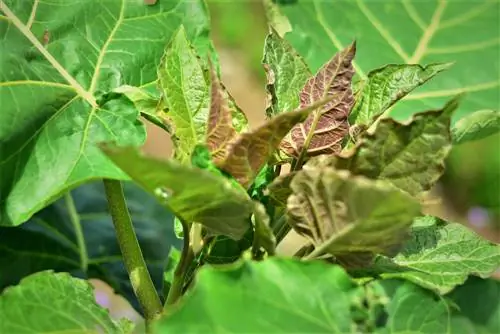- Author admin [email protected].
- Public 2023-12-16 16:46.
- Last modified 2025-06-01 06:02.
With its bright white flowers that are reminiscent of twinkling stars, the Clematis vitalba creates a fairytale atmosphere in the garden. But not without help. In order to produce its rich flowers, it requires pruning at the right time.
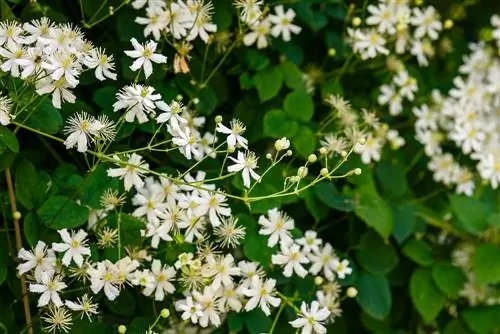
When and how should you cut the Clematis vitalba?
The Clematis vitalba should be cut regularly to prevent baldness and weakness. It belongs to cutting group 3 and should be radically cut back to 30-50 cm above the ground in autumn or spring.
Which cutting group does Clematis vitalba belong to?
Clematis vitalba, also called wild clematis, belongs toPruning group 3 This also includes Clematis viticella, tangutica, texensis, orientalis and some hybrids. They are the summer bloomers among the clematis and form their flowers on this year's shoots. Their flowers can be present from June to October.
Why is cutting Clematis vitalba useful?
If you didn't cut the Clematis vitalba regularly - and that means once a year - it would become bald from the bottom over the course of a few yearsThat doesn't look very appealing and what's more, it is Plant weakened and therefore more susceptible to diseases and pest infestation. In addition, flowers would only form in the upper areas or on the new shoots.
Pruning keeps them vigorous and ensures the production of numerous flower buds.
When should the Clematis vitalba be cut?
Summer bloomers, such as Clematis vitalba, should be cut down inAutumn. This means between October and November. Alternatively, it can be pruned in early spring shortly before budding. This should be done by mid-March at the latest. If it is planted together with a climbing rose, both plants can be cut down in spring.
How exactly do you cut the Clematis vitalba?
The Clematis vitalba isradical cut back. This means you should shorten them to 30 to a maximum of 50 cm above the ground. The new growth including the withered flowers is removed.
First of all, you need a suitable tool to cut back, ideally in the form of secateurs (€11.00 on Amazon). Make sure that it is not only sharp, but also clean. Otherwise, not only could the shoots be bruised, but pathogens from other plants could also spread to the Clematis vitalba.
Tip
Practical - cut at the same time as climbing roses
Clematis vitalba is often planted together with climbing roses, as they like to grow to dizzying heights and bloom at the same time. In spring you can cut both plants at the same time and quickly get the issue over with.

